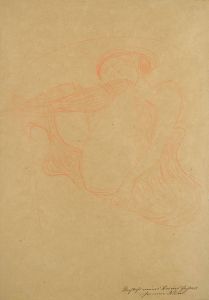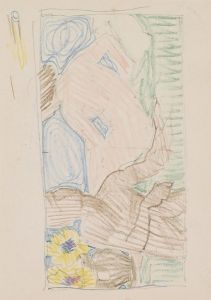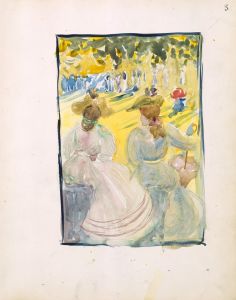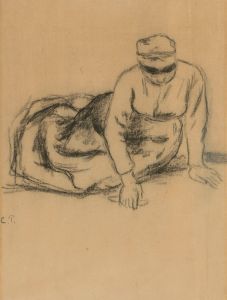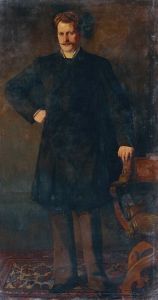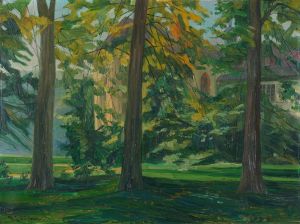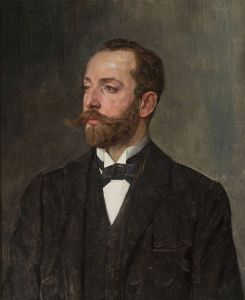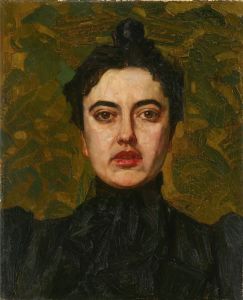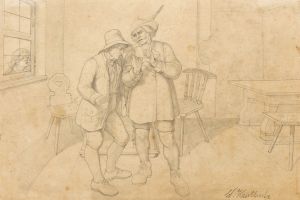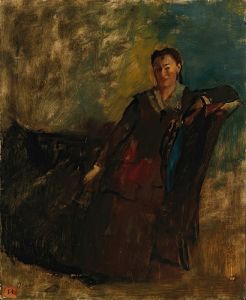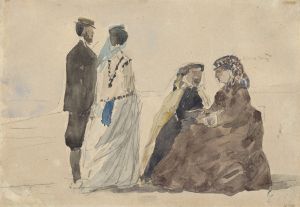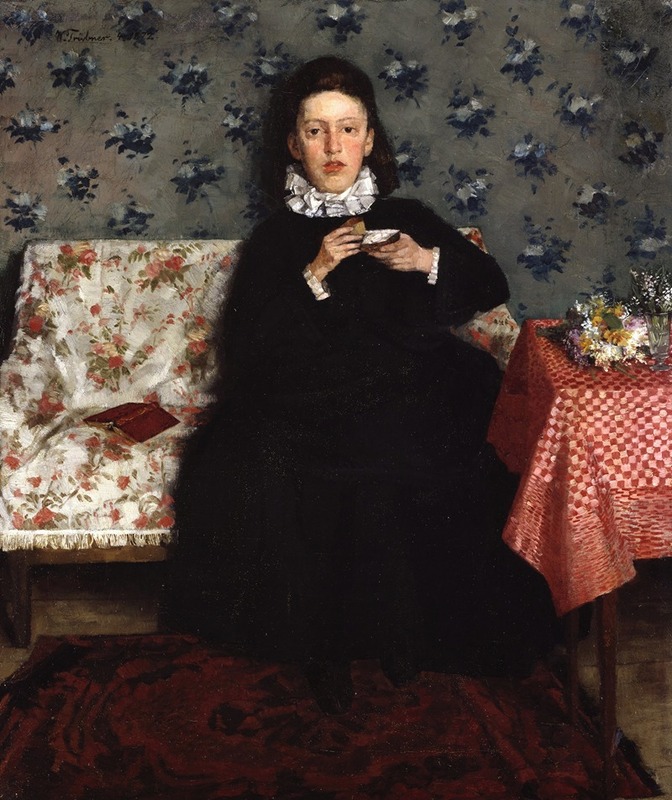
On the Sofa
A hand-painted replica of Wilhelm Trübner’s masterpiece On the Sofa, meticulously crafted by professional artists to capture the true essence of the original. Each piece is created with museum-quality canvas and rare mineral pigments, carefully painted by experienced artists with delicate brushstrokes and rich, layered colors to perfectly recreate the texture of the original artwork. Unlike machine-printed reproductions, this hand-painted version brings the painting to life, infused with the artist’s emotions and skill in every stroke. Whether for personal collection or home decoration, it instantly elevates the artistic atmosphere of any space.
Wilhelm Trübner was a notable German painter associated with the Realist movement, and he is known for his detailed and lifelike portrayals of everyday scenes. One of his works, "On the Sofa," exemplifies his skill in capturing the subtleties of human presence and domestic settings. Trübner was born on February 3, 1851, in Heidelberg, Germany, and he became a significant figure in the transition from the traditional academic style to a more realistic depiction of life and nature.
"On the Sofa" is a painting that reflects Trübner's interest in realism and his ability to convey the textures and atmosphere of a scene. While specific details about the painting's creation, such as the exact year it was painted or its current location, are not widely documented, it is consistent with Trübner's broader body of work from the late 19th century. His paintings often feature rich color palettes and a focus on the play of light and shadow, which bring a sense of immediacy and presence to his subjects.
Trübner studied at the Academy of Fine Arts in Karlsruhe and later in Munich, where he was influenced by the works of Wilhelm Leibl, a leading figure in the German Realist movement. Leibl's emphasis on painting directly from nature and capturing the truth of the subject matter had a lasting impact on Trübner's artistic development. This influence is evident in "On the Sofa," where Trübner's attention to detail and commitment to realism are apparent.
Throughout his career, Trübner was associated with several art movements and groups, including the Munich Secession, which sought to break away from the conservative constraints of academic art. His work, including "On the Sofa," reflects this desire for artistic freedom and exploration of new themes and techniques. Trübner's paintings often depict intimate, everyday moments, and he had a particular talent for rendering the human figure with a sense of authenticity and warmth.
In addition to his painting, Trübner was also an influential teacher and held various academic positions, including a professorship at the Academy of Fine Arts in Karlsruhe. His contributions to art education helped shape a new generation of artists who continued to explore and expand the boundaries of realism in art.
While "On the Sofa" may not be as widely recognized as some of Trübner's other works, it remains an important example of his artistic philosophy and technical skill. The painting captures a moment of quiet reflection and domesticity, inviting viewers to appreciate the beauty in everyday life. Trübner's ability to convey emotion and atmosphere through his meticulous attention to detail and composition is a testament to his mastery as a realist painter.
Overall, Wilhelm Trübner's "On the Sofa" is a significant piece within his oeuvre, illustrating his dedication to realism and his talent for capturing the essence of his subjects. His work continues to be appreciated for its contribution to the development of modern art in Germany and its influence on subsequent generations of artists.





